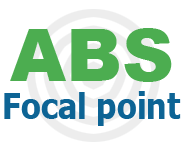|
|
[For the Dutch version, see the ABS Focal Point website.] Welcome to the third ABS Focal Point newsletter. The European Commission has adopted the revised EU Guidance and made it available on the EC website. The document provides more detailed information and practical examples on the scope and user obligations of the EU ABS Regulation. In the next newsletter, we will highlight a few topics from the revised Guidance . Which specific topics you would like to know more about? Let us know by sending an email to NagoyaNL@wur.nl. In this newsletter you can find:
|
|
Revised EU Guidance adopted and made available
The European Commission has adopted a revised Guidance and made it available on the EC website, providing more detailed information and practical examples on the scope and user obligations of the EU ABS Regulation (Regulation (EU) 511/2014).
Although the previously published Guidance provided much information on the EU ABS Regulation for users of genetic resources, more specific guidance was requested, especially further specification of the concept of ‘utilisation’. In close consultation with stakeholders from different sectors and ABS experts from the EU Member States, the European Commission has drafted and adopted a revised Guidance to clarify when an activity with genetic resources falls in scope of the EU ABS Regulation.
Annex II: specific guidance on utilisation An all-new section is Annex II, which provides specific guidance on when genetic resources are considered to be utilised in the meaning of the EU ABS Regulation, assuming they fall in the temporal, geographical and material scopes of the Regulation. Annex II follows the logic of the value chain as closely as possible, starting from acquisition, via storing, management of collections, identification and characterisation, and finishing with product development, product testing and placing of a product on a market. Examples (cases) are drawn from different sectors and often rely on feedback from stakeholders that identified issues and challenges in interpretation of the Regulation. |
New content of the revised GuidanceBoth the revised Guidance and Annex II provide new information on the scope of the EU ABS Regulation. New sections of the Guidance are listed below. Chapter 2. Scope of the Regulation
Chapter 3. User obligations
Chapter 5. Selected sector-specific issues
Contents of Annex IISince Annex II is completely new, an overview of the topics has been listed below.
Find the revised Guidance on the ABS Focal Point page EU Regulation 511/2014 or download it using the buttons below. |
|
Recap: Global ABS Conference 2020On 29 October 2020 it was exactly 10 years ago that the Nagoya Protocol was adopted. To celebrate the 10th anniversary, the UNDP-GEF Global ABS Project organised the Global ABS Conference 2020. This online event highlighted the progress made on ABS so far and discussed a vision for the future. The conference was organised in partnership with the Secretariat of the Convention on Biological Diversity, and in collaboration with the Governments of Japan and Jordan and other partners. Taking place over multiple days in October and November, the theme of the conference was “the ABS we all need”. After the opening session on October 29th, sessions followed focusing on researchers (November 4th), the private sector (November 11th) and indigenous peoples (November 18th), while the concluding session on November 25th looked towards the future. Most sessions were concluded by a Q&A and debates. Using #theABSweALLneed on social media, participants were also invited to share their perspectives on ABS. The conference’s recordings and presentations are available on the Global ABS Community website (after logging in): ‘Global ABS Conference 2020’. |
|
Dutch seed company Bejo pays into Benefit-sharing FundThe Dutch vegetable seed company Bejo has made a payment to the Benefit-sharing Fund of the International Treaty on Plant Genetic Resources for Food and Agriculture (ITPGRFA). This is because Bejo has developed a commercialised product using material obtained from the Multilateral System of the ITPGRFA through the Centre for Genetic Resources, the Netherlands (CGN). Access and Benefit-sharing of genetic resources The Multilateral System (MLS) of the ITPGRFA is a shared pool of genetic resources comprising 64 important crops and forages. Under certain conditions, those who use material from the MLS and develop products from this have to share a percentage of their net sales through the Benefit-sharing Fund of the ITPGRFA. Through the Benefit-sharing Fund, farmers and scientists in developing countries are supported to conserve and sustain the crops that provide our food supply. The Benefit-sharing Fund has benefited over 1 million people through 80 projects in 67 developing countries over four project cycles. The fourth round of these projects is currently ongoing. Bejo and the Centre for Genetic Resources Bejo Zaden B.V. is a vegetable seed company in The Netherlands that is currently active in over 30 countries. In 2015, Bejo acquired Agrisemen, which was the company that accessed material from the MLS through the Centre for Genetic Resources, the Netherlands (CGN). Bejo’s payment to the Benefit-sharing Fund of the ITPGRFA is based on a percentage of the seed sales based on the material accessed from the MLS. Bert Schrijver, Director of Research at Bejo, states: “As a bona fide company, it is important that we keep to the agreements of the SMTA.” The Centre for Genetic Resources, the Netherlands (CGN) manages a large collection of plant genetic resources, storing over 23,000 varieties and wild populations in the genebank. These range from commercial varieties, landraces and farmer varieties to wild varieties of crops from over 100 countries. Theo van Hintum, head of CGN-Plant, comments: “We all know that the breeding industry plays a vital role in feeding the world by creating the new varieties needed to produce sufficient and healthy food. Genebanks, such as CGN, contribute to this by making genetic resources available for the users doing the breeding. It is great to see that these users are also sharing some of the monetary benefits obtained from their activities, for the purpose of better conserving the raw material in the countries where it originated.” |
|

